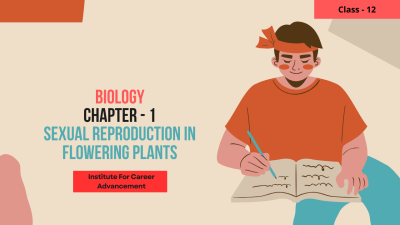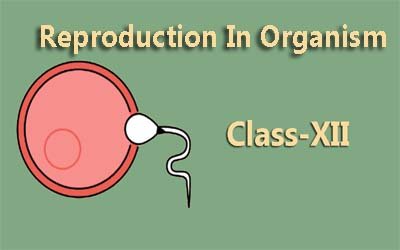Course description
Welcome to the world of floral reproduction! This Class 12 Biology course on Sexual Reproduction in Flowering Plants will unveil the captivating story of how flowers, nature's vibrant masterpieces, ensure the continuation of plant life. Get ready to explore the intricate dance between flower structure, pollen transfer, fertilization, and seed development!
Part 1: The Stage is Set: The Flower
The Allure of Flowers: We'll begin by exploring the fascinating world of flowers, not just for their beauty, but for their crucial role in sexual reproduction.
Flower Power: Delve into the structure of a flower, identifying key parts like sepals, petals, stamens (male reproductive organs), and carpels (female reproductive organs).
Gamete Formation: Uncover how stamens produce pollen grains (male gametes) containing sperm cells, and carpels house ovules (female gametes) containing egg cells, laying the foundation for fertilization.
Part 2: The نقل (Naql - Arabic for "Transfer") of Life: Pollination
Spreading the Seed: This exciting phase focuses on pollination, the transfer of pollen grains from the anther (pollen sac) of the stamen to the stigma (sticky receptive surface) of the carpel, often on a different flower.
Pollination by Design: Explore the various mechanisms of pollination, including wind pollination, insect pollination (where insects like bees act as pollinators), and animal pollination (where animals like birds contribute to pollen transfer).
Self-Pollination vs. Cross-Pollination: Understand the differences between self-pollination (pollen from the same flower) and cross-pollination (pollen from a different flower), and the advantages and disadvantages of each.
Part 3: The Culmination: Fertilization and Seed Development
The Journey of the Pollen Tube: Discover what happens after successful pollination. Pollen grains germinate on the stigma, forming pollen tubes that grow down the style (stalk) towards the ovary.
The Fusion of Life: Explore the process of fertilization, where a sperm cell from the pollen tube fuses with an egg cell within an ovule, leading to the formation of a zygote (fertilized egg).
From Zygote to Seed: Unravel the development of the zygote into an embryo within the ovule. The surrounding ovule tissues mature into the seed coat, protecting the developing embryo and providing nutrients for its growth.
Part 4: The Promise of the Future: Fruits and Seed Dispersal
The Fruit's Reward: Learn how the ovary, which houses the developing seeds, matures into a fruit. Fruits come in various shapes, sizes, and colors, often serving as a sweet reward for animals that disperse the seeds.
Scattering the Seeds: Explore different mechanisms of seed dispersal, including wind dispersal, animal dispersal (where animals eat the fruit and deposit the seeds elsewhere), and water dispersal.
By the end of this course, you'll gain a comprehensive understanding of:
The intricate flower structure and its role in sexual reproduction.
The fascinating mechanisms of pollination and its dependence on various agents.
The process of fertilization and the development of seeds, ensuring the continuation of plant life.
The significance of fruits in seed dispersal and the future generation of flowering plants.
ফুলের প্রজননের জগতে স্বাগতম! ফুলের গাছগুলিতে যৌন প্রজনন সম্পর্কিত দ্বাদশ শ্রেণির জীববিজ্ঞান কোর্সটি কীভাবে ফুল, প্রকৃতির প্রাণবন্ত মাস্টারপিস, উদ্ভিদ জীবনের ধারাবাহিকতা নিশ্চিত করে তার চিত্তাকর্ষক গল্পটি উন্মোচন করবে। ফুলের গঠন, পরাগ স্থানান্তর, নিষিক্তকরণ এবং বীজের বিকাশের মধ্যে জটিল নৃত্য অন্বেষণ করার জন্য প্রস্তুত হন!
পর্ব 1: মঞ্চ তৈরিঃ ফুল
ফুলের আকর্ষণঃ আমরা ফুলের আকর্ষণীয় জগৎ অন্বেষণ করে শুরু করব, কেবল তাদের সৌন্দর্যের জন্য নয়, যৌন প্রজননে তাদের গুরুত্বপূর্ণ ভূমিকার জন্য।
ফুলের শক্তিঃ একটি ফুলের কাঠামো অনুসন্ধান করুন, সেপাল, পাপড়ি, পুংলিঙ্গ (পুরুষ প্রজনন অঙ্গ) এবং কার্পেলের মতো মূল অংশগুলি চিহ্নিত করুন। (female reproductive organs).
গ্যামেট গঠনঃ কীভাবে পুংলিঙ্গগুলি শুক্রাণু কোষযুক্ত পরাগকণিকা (পুরুষ গ্যামেট) তৈরি করে এবং কার্পেলগুলি ডিম কোষযুক্ত ডিম্বাশয় (মহিলা গ্যামেট) তৈরি করে, যা নিষিক্তকরণের ভিত্তি স্থাপন করে।
দ্বিতীয় পর্বঃ জীবনের নকুল (নকুল-আরবি ভাষায় "স্থানান্তর"): পরাগায়ন
বীজ ছড়িয়ে দেওয়াঃ এই উত্তেজনাপূর্ণ পর্যায়টি পরাগায়নের উপর দৃষ্টি নিবদ্ধ করে, প্রায়শই একটি ভিন্ন ফুলের উপর পুংকেশরের পরাগ (পরাগ কোষ) থেকে কার্পেলের কলঙ্ক (আঠালো গ্রহণযোগ্য পৃষ্ঠ)-এ পরাগকণিকা স্থানান্তর করা হয়।
নকশা অনুসারে পরাগায়নঃ বায়ু পরাগায়ন, পোকামাকড়ের পরাগায়ন (যেখানে মৌমাছির মতো পোকামাকড় পরাগায়নকারী হিসাবে কাজ করে) এবং প্রাণী পরাগায়ন সহ পরাগায়নের বিভিন্ন প্রক্রিয়া অন্বেষণ করুন। (where animals like birds contribute to pollen transfer).
স্ব-নির্বাচন বনাম ক্রস-ভোটঃ স্ব-পরাগায়ন (একই ফুলের পরাগ) এবং ক্রস-পরাগায়ন (ভিন্ন ফুলের পরাগ) এবং প্রত্যেকটির সুবিধা ও অসুবিধাগুলির মধ্যে পার্থক্যগুলি বুঝুন।
পার্ট 3: দ্য কালমিনেশনঃ সার প্রয়োগ ও বীজ বিকাশ
পরাগ নলের যাত্রাঃ সফল পরাগায়নের পরে কী ঘটে তা আবিষ্কার করুন। পরাগকণাগুলি কলমের উপর অঙ্কুরিত হয়, পরাগ নল তৈরি করে যা ডিম্বাশয়ের দিকে শৈলী (ডাল) নিচে বৃদ্ধি পায়।
দ্য ফিউশন অফ লাইফঃ নিষিক্তকরণের প্রক্রিয়াটি অন্বেষণ করুন, যেখানে পরাগ নল থেকে একটি শুক্রাণু কোষ একটি ডিম্বাশয়ের মধ্যে একটি ডিম কোষের সাথে মিশে যায়, যার ফলে একটি জাইগোট তৈরি হয়। (fertilized egg).
জাইগোট থেকে বীজ পর্যন্তঃ ডিম্বাশয়ের মধ্যে একটি ভ্রূণের মধ্যে জাইগোটের বিকাশকে উন্মোচন করুন। পার্শ্ববর্তী ডিম্বকোষের টিস্যুগুলি বীজের আবরণে পরিণত হয়, যা বিকাশমান ভ্রূণকে রক্ষা করে এবং এর বৃদ্ধির জন্য পুষ্টি সরবরাহ করে।
চতুর্থ পর্বঃ ভবিষ্যতের প্রতিশ্রুতিঃ ফল ও বীজ বিতরণ
ফলের পুরস্কারঃ জেনে নিন কিভাবে ডিম্বাশয়, যেখানে ক্রমবর্ধমান বীজ থাকে, একটি ফলে পরিণত হয়। ফলগুলি বিভিন্ন আকার, আকার এবং রঙে আসে, যা প্রায়শই বীজ ছড়িয়ে দেওয়া প্রাণীদের জন্য একটি মিষ্টি পুরস্কার হিসাবে কাজ করে।
বীজ ছড়িয়ে দেওয়াঃ বীজ ছড়িয়ে দেওয়ার বিভিন্ন প্রক্রিয়া অন্বেষণ করুন, যার মধ্যে রয়েছে বায়ু ছড়িয়ে দেওয়া, প্রাণী ছড়িয়ে দেওয়া (যেখানে প্রাণীরা ফল খায় এবং অন্য কোথাও বীজ জমা করে) এবং জল ছড়িয়ে দেওয়া।
এই কোর্সের শেষে, আপনি নিম্নলিখিত বিষয়গুলি সম্পর্কে একটি বিস্তৃত ধারণা অর্জন করবেনঃ
জটিল ফুলের কাঠামো এবং যৌন প্রজননে এর ভূমিকা।
পরাগায়নের আকর্ষণীয় প্রক্রিয়া এবং বিভিন্ন এজেন্টের উপর এর নির্ভরতা।
নিষিক্তকরণের প্রক্রিয়া এবং বীজের বিকাশ, উদ্ভিদ জীবনের ধারাবাহিকতা নিশ্চিত করে।
বীজ প্রসারে ফলের গুরুত্ব এবং ফুলের উদ্ভিদের ভবিষ্যৎ প্রজন্ম।



















